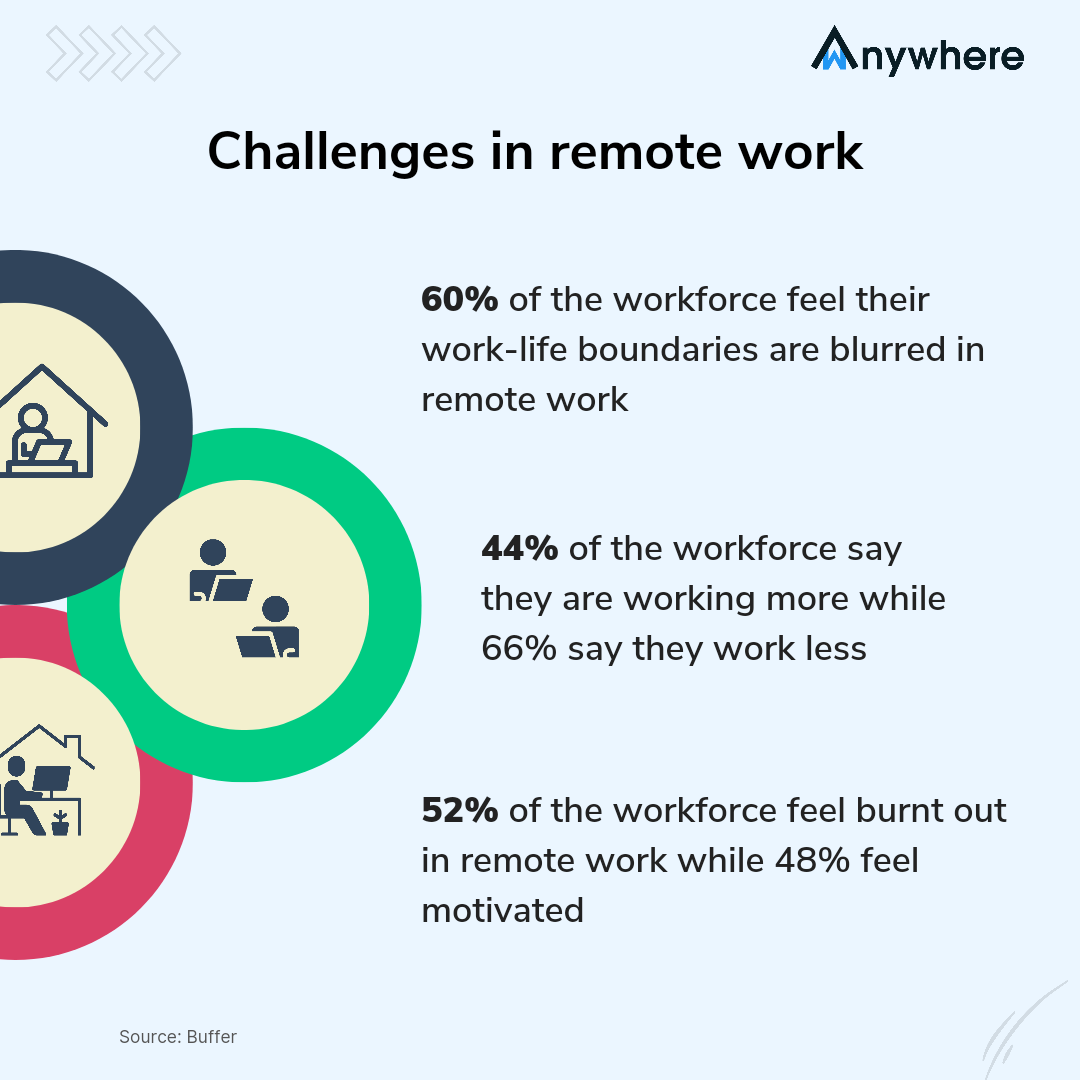Work is evolving, and so are the workplaces, equally growing are the concerns about disruptions in remote environments that are causing workforce non-productivity and operational inefficiency. Advanced analytics capabilities of the technologies today are helping the concerned organizations find viable productivity solutions and maintain operational efficiency in remote work environments.
Table of Contents
From flexibility to work-life balance, the multiple advantages of remote work are gaining positive feedback from 91% of the distributed workforce, and another 97% say they would recommend remote work to others. The growing remote work is the preferred choice for 98% of the workforce who think of it as a viable alternative for the future of work. Equally growing concerns about increasing inefficiencies and non-compliance have made it critical for organizations to balance productivity and compliance in evolving distributed workplaces.
Rising future of work
A recent study on the State of Remote Work from Buffer shows that 64% of the workforce operates fully remotely, while 71% of companies are considering permanently allowing some amount of remote work to their teams.

As a helpful ally, technology can assist organizations to stay in the know of how teams are doing and what needs to be improved to keep workplace efficiency intact. Whether it is employee monitoring software, time management tools, employee engagement, workforce utilization, or workplace compliance, technology is playing a vital role in helping companies evaluate and enhance performance to help teams be efficient and contribute to business goals.
Let’s understand the importance of technology to support businesses in identifying and improving workplace disruptions.
How technology can help organizations increase productivity in remote work
Remote work equally brings advantages and challenges that organizations operating with distributed teams need to manage and align work flexibility with operational efficiency.
Improve Employee Engagement
The report on State of Remote Work 2023 from Buffer reveals that 65% of the workforce feels somewhat engaged, disengaged, or very unengaged at work, posing a challenge to remote work efficiency.
Solution
Unlock the time management capability of the technology to identify what teams are idle most times, using excessive breaks, or reflecting increasing non-productive time. It helps analyze employee data and find out the challenges. You can apply corrective measures like training for upskilling and encouragement to improve focus time. Help your distributed teams increase engagement and performance at work.
Mitigate Employee Burnout
The study further reveals that 52% of the workforce feels burnt out or no change to their work conditions. Additionally, 56% of remote workers say they feel more work-related stress than in previous years. The data shows risks of exhaustion and workplace inefficiencies.
Solution
Leverage employee monitoring software to define the duration and set automated alerts against continuous work hours to help your workforce take breaks after a certain work time and avoid exhaustion or burnout. It helps your remote teams maintain work and mental health for more productive and quality work.

Enhance Employee Utilization
The report indicates that 44% of the workforce is working more or overworking in remote work. It reflects the challenge of balancing employee utilization in remote work.
Solution
Get help from the workforce management tool to identify what teams are utilized on what tasks and what teams have availability to take on more work. Optimize employee utilization by fairly distributing the tasks and avoiding overburdening your workforce to improve their ability to perform more efficiently.
Implement Shift Management
The report data finds that 74% of remote workforce operate in multiple time zones and need efficient work management that helps align their diverse locations and work hours.
Solution
Bring the shift management tool into practice and gain the ability to manage effortlessly your diverse workforce across locations and time zones. The centralized single-view dashboard helps you capture the insights you need to know how your distributed teams are doing and what efficiency they achieve.
Ensure Seamless Collaboration
The study adds that 62% of the workforce works directly with teammates across multiple time zones and needs an effective and secure communication medium to share, discuss, or plan.
Solution
Take advantage of secure and productive collaboration tools that enable you to control access in the virtual environment and keep the discussion or document sharing private to the connected individuals.
Enable Security and Compliance
The survey extracts that 82% of the workforce works from home while 9% work distributed across coworking spaces, coffee shops/cafés, and other remote locations, posing a regulatory compliance and data privacy challenge for organizations with data-critical business operations.
Solution
Integrate security and compliance solutions into the data-intensive workflows of your business and measure the actions of remote teams in data-sensitive roles. It helps predict and prevent risky employee behavior indicative of threats to align regulatory compliance in remote work and ensure data privacy.
Adopt future of work with confidence
In remote work, the key lies in managing the challenges and transforming them into advantages. With more organizations shifting to the future of work and many companies planning to transition to remote work in the near future, the rising new work norms are here to stay. Leverage the technology, including employee monitoring, productivity management, time tracking, and more to your benefit and thrive in the evolving workplaces.
Start a free trial today to experience employee monitoring software and learn how it can assist you in staying in sync with what is going well and what needs improvement to optimize your remote work environment.
wAnywhere Blog
Check out the wAnywhere blog to learn more about our product, customer stories, and our take on meetings, remote working, productivity, and more.

